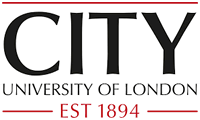Dr M Rodriguez-Carmona, Dr M Powner
No more applications being accepted
Funded PhD Project (European/UK Students Only)
About the Project
Near infrared light has been shown to elicit biological responses in vitro and in vivo. The therapeutic use of red light is known as photobiomodulation (PBM). Typically, it involves brief repeated illumination with far red/near infrared light (600-1000 nm), usually derived from light emitting diodes (LED). This treatment modality has been recently considered for treating ocular disease and the results demonstrated improvement in visual acuity in patients with dry and wet AMD treated following exposure to 780nm light.
Although the exact process behind this healing effect are yet to be fully understood. It is thought that the ameliorative effect of deep red light is brought about by an improvement in mitochondrial function. Mitochondria play an important role for cellular respiration. They are responsible for producing adenosine triphosphate (ATP), the universal energy currency, primarily via the electron transport chain. In disease and old age, a decline in mitochondrial membrane potentials and ATP production contributes to cell death. In mitochondria, there is absorption of light of specific long wavelengths by mechanisms of the electron transport chain. This facilitates improvement in respiration and in turn cellular function and survival.
The properties of light which are most effective for treatment are yet to be determined. In this study we will examine a number of long wavelengths to determine if certain wavelengths are absorbed more readily, and are therefore more effective. We will also investigate the effects of flickering light versus a continuous light beam.
In this study, we intend to use investigate the effect of near infrared light on visual function in both young and old people. The assessment of visual performance will consist of a number of tests developed at City, University of London.
This project will be carried out in collaboration with the Engineering department and the Optometry and Visual science division. This will be suitable for a student with a biology, engineering or physics background.
If you would like to have an informal discussion please contact: [Email Address Removed]
School of Health Sciences
The School of Health Sciences is offering up to five full/part-time Doctoral Studentships to outstanding candidates. We are a leading provider of applied healthcare research and we offer PhD candidates an outstanding research environment: in REF 2014, 100% of our research environment was judged as world leading or internationally excellent and 100% of research impact was judged as world leading or internationally excellent. In the recent Postgraduate Research Experience Survey, 96% of PhD students responding rated the expertise and responsiveness of their supervisors as excellent. Successful applicants would join around 70 current PhD students in the School, providing a supportive environment of peers.
Eligibility
The studentships will be awarded on the basis of outstanding academic achievement and the potential to produce cutting edge-research.
• Applicants must hold at least a 2.1 honours degree or merit level Masters degree in a relevant subject (or international equivalent)
• Applicants whose first language is not English must have achieved at least 7.0 in IELTS or a recognised equivalent
• Applicants must not be currently registered as a doctoral student at City, University of London or any other academic institution
How to Apply
To apply for studentship funding:
• Complete an application form for a place on the PhD programme by clicking here where you will be asked to register before you can complete your application
• Upload your research proposal (four sides of A4 maximum including references) on one of the specific projects listed by supervisors or in any of the areas covered by the research centres following discussion and agreement with a potential supervisor.
Research centres: https://www.city.ac.uk/health/research
• Suggested structure of proposal:
1. Project description; Topic, motivation from the literature, Methods and potential impact
2. How does this fit with the work carried out in the School of Health Sciences?
3. Potential for this research lead to an important question or methodological innovation that might lead to 4* output
• Upload a short cover letter with your application requesting that your application be considered for studentship funding
• Submit your online application form and supporting documents by 30 November 2018. If you have any queries, please the doctoral degrees support officer, Tracy Rowson ([Email Address Removed]).
Funding Notes
• An annual bursary (£16,000 in 2018/19)
• All fees for PhD student registration paid for UK and EU students. Applications are welcome from overseas applicants but the applicant must make appropriate arrangements to cover the difference between the overseas and UK tuition fee
• Research costs up to £1000 over the three years

 Continue with Facebook
Continue with Facebook

